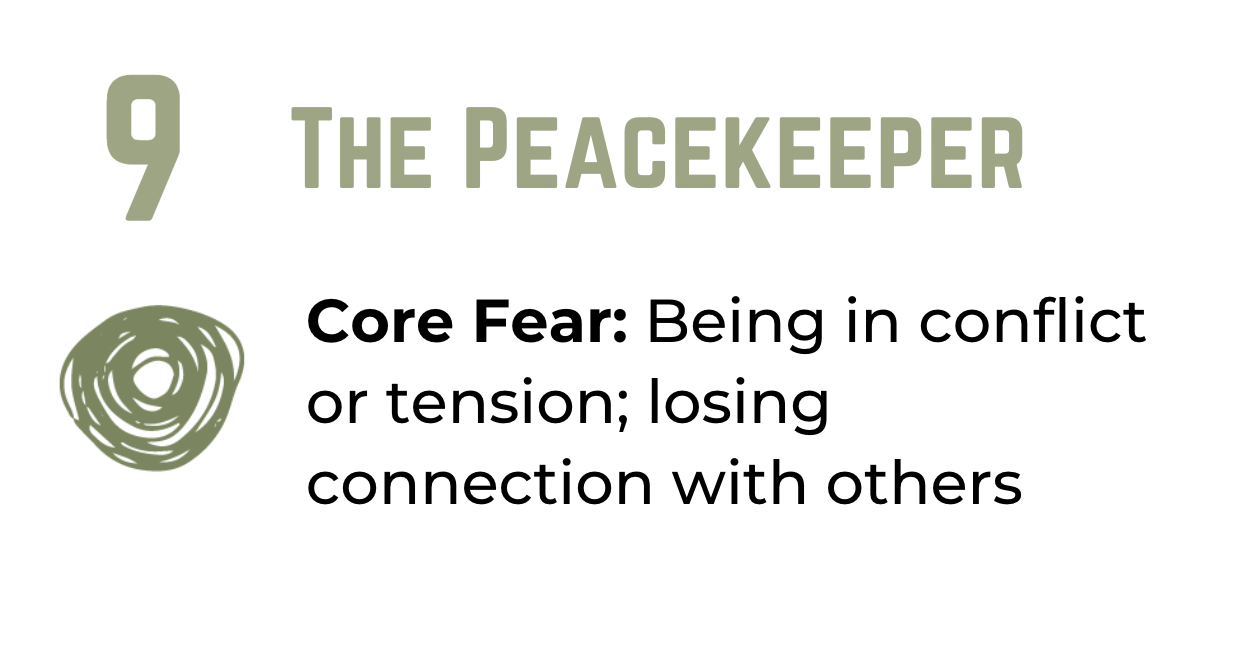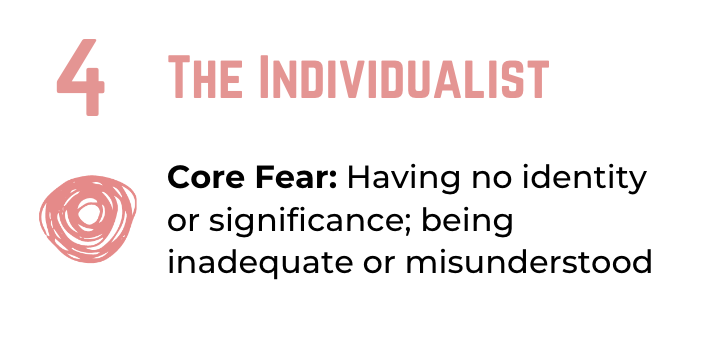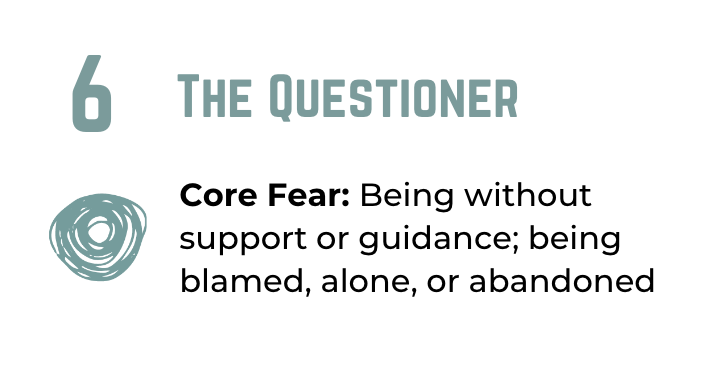Conflict Styles of the Enneagram
The Enneagram teaches there are 3 distinct conflict styles.
In Enneagram speak, the name of these styles is the Harmonic Groups.
These styles describe the ways we respond to conflict, difficulties, or disappointments.
The three groups are Optimistic, Logical, and Reactive.
Reactive, Logical, and Optimistic Enneagram Conflict Styles
Optimistic Style
The Optimistic Style types focus on the bright side.
They prefer to reframe negative viewpoints into positives or minimize the situation.
“It’s no biggie, let’s just move on.”
Logical Style
The Logical Style types focus on the facts.
They emotionally detach to find a logical solution.
“Let’s think clearly and use logic and reason to fix this”
Reactive Style
The Reactive Style types focus on authentic emotional reactions.
They are emotionally reactive, and they want others to be as well.
“Passion and emotion show how much I care”
How conflict style shows up for each Enneagram type
The Enneagram is based on the core fears and core desires for each of the nine types. It is very important that we always go back to the core fears and core desires - they are the foundation for everything else in Enneagram theory.
For each type, I’ll give you the Core Fear of each type, and then explain how that Core Fear drives their Conflict Style.
Optimistic Style: Enneagram 2, 7, and 9
Harmonic Groups of the Enneagram: Optimistic Group
The Optimistic Style types focus on the bright side.
They prefer to reframe negative viewpoints into positives or minimize the situation.
“It’s no biggie, let’s just move on.”
Enneagram Twos
Enneagram Twos want to preserve the relationship at any cost, because relationships are the center of their world. They ignore or deny their own part in conflict, because if they admit their part, that might cause the other person to reject them or stop loving them. Twos can get overly focused on the other person’s feelings and may move into subtle manipulation in order to control the relationship.
Enneagram Sevens
Enneagram Sevens prefer to reframe conflict and move on, rather than confront the pain of reality. They fear if they move into sadness, anger, or grief, they might get stuck and never come back out. It feels easier to find the positives and focus on those. It takes courage and intention for a Seven to face the reality of a disagreement or disappointment without looking away or trying to escape.
Enneagram Nines
To Enneagram Nines, conflict feels like disconnection, which is 9s core fear. They prefer to do whatever it takes to resolve or end any conflict or tension, even if it means absorbing the pain themselves, denying their own needs, or burying their anger. Nines fall asleep to their own needs, which means they become great at appeasing others’ needs. They would rather end a conflict by giving in then do the work of uncovering their own desires or facing their own anger.
Logical Style: Types 1, 3, and 5
Harmonic Groups of the Enneagram: Logical Group
The Logical Style types focus on the facts.
They emotionally detach to find a logical solution.
“Let’s think clearly and use logic and reason to fix this”
Enneagram Ones
Enneagram Ones believe that rightness and correctness are determined based on the facts and data. They want to make sure they have the facts correct so they don’t make a mistake or say something wrong. They easily get angry, but since they believe anger is a “bad emotion”, they repress their anger, relabeling it as frustration, irritation, or annoyance.
Enneagram Threes
Efficiency is highly important to Enneagram Threes, and in conflict, they want to get to the solution as efficiently as possible. Emotions aren’t efficient - they just slow us down! Threes struggle to recognize and process their own emotions, choosing instead to compartmentalize. Threes want the people they care about to see them always in a good light, and this is another reason to get to the other side of a conflict quickly.
Enneagram Fives
Enneagram Fives are perhaps the most logical type on the Enneagram, living in their heads and constantly analyzing data. They also, along with Ones and Threes, struggle with processing their own emotions, and prefer to keep emotion out of conflict. Fives have a limited amount of energy each day, and they ration it carefully. A relational conflict is something that will suck up a lot of a Five’s relational energy - they must be careful how much energy they invest in a conflict.
Reactive Style: Types 4, 6, and 8
Harmonic Groups of the Enneagram: Reactive Group
The Reactive Style types focus on authentic emotional reactions.
They are emotionally reactive, and they want others to be as well.
“Passion and emotion show how much I care”
Enneagram Fours
Enneagram Fours believe authenticity is essential. They present their whole, authentic selves in conflict - their true emotions, reactions, and thoughts. Fours want the other person to respond with authenticity as well, because this proves to them that the relationship is honest and valuable and worth fighting for. Fours also deeply fear abandonment, so if they get a sense that abandonment is near, their emotional reactions heighten.
Enneagram Sixes
Enneagram Sixes also fear abandonment, and every conflict comes with the potential to leave the Six abandoned, if it goes south. Sixes push and fight and demand reactions from the other party in conflict until they are reassured that they will not be left without support. The Six’s natural suspicion and constant alertness for danger also produces a defensiveness in conflict.
Enneagram Eights
Enneagram Eights are honest, no-BS people, and they often challenge others to be honest, and even to challenge them back. Eights express their anger easily and openly, unlike Nines, who bury their anger, and Ones, who repress their anger and relabel it as frustration. Their fear of being controlled or harmed by others leads to their volatility in conflict, as they’ll do whatever they need to do to stay in control.
Balancing our conflict styles
With all things in the Enneagram, balance should always be one of our goals.
The Enneagram doesn’t put you in a box - it shows you the box you already live in, and helps you get out of that box!
Once you learn about your own conflict style, start to notice it in real life. Recognize your impulse to escape, or your free-flowing emotional response, or your almost-subconscious shutting down of your emotions. You are not trapped in any one of these styles - we can all learn to integrate parts of each style.
There are good things in each conflict style. We can grow healthier when we recognize the good and healthy parts of each conflict style and practice them in our own relationships.
















